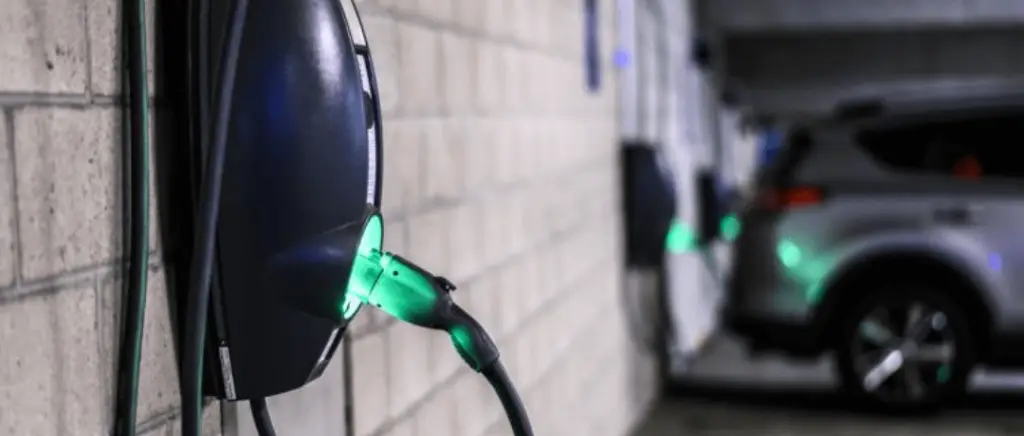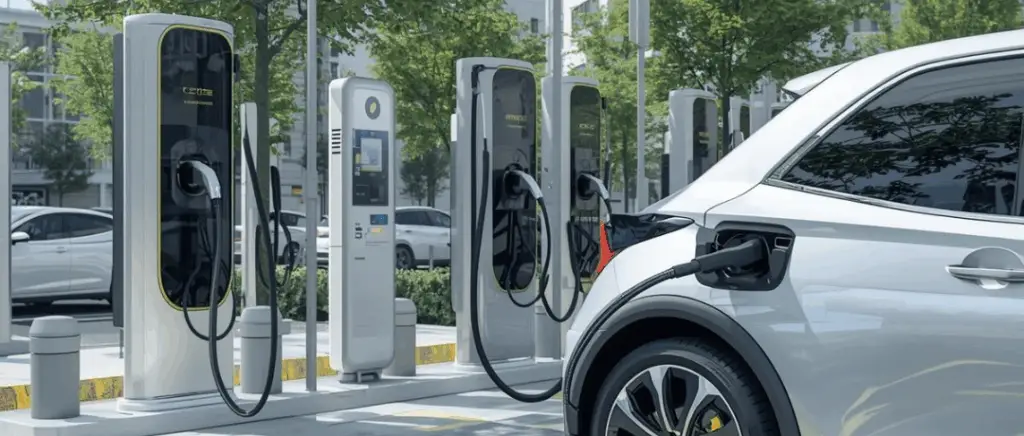Legal requirements for installing a charging point in a condominium
Regulations in force
The installation of charging points in condominiums is governed by a number of regulations designed to facilitate the process while guaranteeing safety and compliance with current standards. Here are the main legal provisions you need to be aware of.
The right to take
Le right to take allows any co-owner or tenant to install, at their own expense, a recharging point for their vehicle. electric vehicle on its parking space. This right is enshrined in Article 24 of the law of 12 July 2010 national commitment to the environment, as amended by the law of 17 August 2015 on energy transition for green growth. This law stipulates that the syndicate of co-owners cannot oppose the installation, except on serious and legitimate grounds, such as the technical non-compliance of the project or the existence of a collective project already planned.
The decree of 24 December 2020
Decree no. 2020-1720 of 24 December 2020 has made significant changes designed to simplify and speed up the process of installing charging points in condominiums. In particular, the decree reduces the response time for the syndic from six to three months and clarifies the conditions under which a co-ownership can refuse an individual installation in favour of a collective solution.
Obligations for new buildings and renovations
The law on the orientation of mobility (LOM) imposes specific obligations on new builds and major renovations of car parks. From 11 March 2021, all new residential and non-residential buildings must provide pre-fitting for charging points in at least 20% of parking spaces. This requirement also applies to renovations of car parks with more than ten spaces.
Decree no. 2016-849 of 28 June 2016
Decree no. 2016-849 of 28 June 2016 sets out the procedures for installing charging points in condominiums. It defines the obligations of co-ownership associations and co-owners with regard to the pre-equipment and installation of charging points. The decree also stipulates that installation costs may be shared between co-owners, subject to certain conditions.
Safety and compliance
All installations must be carried out by IRVE-qualified professionals and comply with standards NF C 15-100 and NF C 15-722. These standards ensure the electrical safety and compatibility of the equipment installed.
Complying with all these regulations means that recharging points can be installed legally and safely in communal car parks. For more details on the procedures and obligations, you can consult the legislative texts on the site of Légifrance.
The co-ownership application process
To install a charging point in a communal garage, you need to go through a specific application process within the condominium. This process is designed to ensure that the installation complies with the rules of the condominium and the regulations in force.
| Étape | Description | Ressources |
|---|---|---|
Preparing your application | Prepare a complete file with a description, technical plan, cost estimate and impact assessment. | |
Submission to the trustee | Send the request to the condominium manager for review and approval. | Co-ownership Code |
Notice of AGM | Call a general meeting to discuss and vote on the project. | |
Co-owners' vote | Voting on the installation request and deciding on the allocation of costs. | |
Installation | Supervising the work and ensuring that it complies with plans and regulations. | Decree no. 2016-849 |
By following this application process, condominiums can ensure that the installation of the charging point is carried out transparently and in compliance with legal requirements.
Also read → The obligations of a lessor for a recharging point in France
Steps to installing a charging point in a condominium
Site preparation and assessment
Before proceeding with the installation, it is essential to carry out a detailed inspection of the site:
- Make sure the location you choose for the charging point is large enough to allow safe installation and easy access for users.
- Examine the condition of the walls, floor and existing electrical installations to make sure they can support the installation of the charging point.
The electrical needs analysis is a crucial step in determining the capacity of the existing electrical installation to support the new charging point:
- Calculate the electrical power available and compare it with the charging point requirements.
- Make sure that your electrical installation complies with current safety standards, such as the NF C 15-100 in France.
What's more, the installation must be carefully planned to ensure that it is installed efficiently and safely:
- Create a detailed plan showing the location of the charging point, the wiring required and the electrical connection points.
- Work closely with qualified electricians and charging station installers to ensure that your installation complies with safety standards.
Finally, before proceeding with the installation, it is essential to obtain all the necessary authorisations:
- Make sure that the request for installation has been approved by the general meeting of co-owners.
- Check with your local authorities or electricity suppliers to see if any specific authorisations are required.
Installation procedure
Once the preparations and site assessments have been completed, the process of installing the charging point can begin. There are seven stages.
1. Selecting the charging point
The first step is to choose the charging point best suited to your condominium's needs. There are various types of charging point, including rapid charging points ( of up to 50 kW, enabling you to recharge a battery electric vehicle in about 30 minutes) and standard recharging points (offering power from 3.7 kW to 22 kW, requiring several hours for a full recharge). It's important to select a charging point that meets the specific requirements of the condominium in terms of power, compatibility with residents' electric vehicles and cost.
2. Preparing the installation site
Before proceeding with the installation, it is essential to prepare the site (clean the chosen location, check the state of the existing infrastructure, put in place the necessary equipment). Make sure that the site is accessible and safe for the installers.
3. Installation of electrical wiring
The electrician must ensure that the wiring is correctly insulated and protected to avoid any risk of fire or short-circuit. For more information on safety standards, consult the AFNOR website.
4. Installing the charging point
Once the electrical wiring is in place, the charging point can be installed. This stage includes mounting the charging point on the support provided, connecting the electrical wiring and installing safety devices such as circuit breakers and fuses. The installer must follow the manufacturer's instructions to ensure a safe and compliant installation.
5. Tests and checks
After installation, it is essential to carry out tests and checks to ensure that the charging point is working properly. This includes load tests to check that the charging point is supplying the necessary power, safety tests to ensure that protective devices are working properly and visual checks to ensure that the installation complies with safety standards.
6. Commissioning
service. This stage involves configuring the parameters of the charging point, such as charging rates, availability times and access arrangements. It is also important to train users on how to use the charging point and provide them with the information they need to use it safely and efficiently.
7. Maintenance and monitoring
After commissioning, it is essential to put in place a maintenance and monitoring programme to ensure that the charging point is working properly. The programme includes regular inspections to check the condition of the charging point, safety tests to ensure that protective devices are working properly and software updates to ensure that the charging point is up to date with the latest safety and performance standards.
Also read → Charging points in condominiums: what's new?
The financial aspects of installing a charging point
Associated costs
Installing a charging point in a collective garage involves a number of costs that are important to consider:
- Cost of charging point : varies according to power, functionality and brand.
- Cost of installation : requires the intervention of qualified professionals, such as electricians, and depends on a number of factors (complexity, distance between the terminal and the switchboard, any modifications).
- Cost of preparation work This includes preparing the site, installing the electrical wiring and setting up the safety devices.
- Cost of authorisations and certifications : requires certain authorisations and certifications to be obtained (administrative authorisations, compliance certifications, any technical inspections).
- Cost of maintenance and servicing : budget for regular inspections, repairs and software updates.
Charging station | - Standard charging points from 3.7 kW to 22 kW (between €500 and €2,000)
- Fast charging points up to 50 kW (between €2,000 and €10,000) | |
Installation | From €500 to €2,000 | |
Preparation work | From €300 to €1,000 | |
Authorisations and certifications | From €100 to €500 | |
Maintenance and servicing | From €100 to €300 per year |
Subsidies and financial aid
A number of grants and financial assistance schemes are available to reduce the costs associated with this installation.
The ADVENIR programme
The ADVENIR programmefunded by ADEME, offers subsidies for the installation of charging points for electric vehicles. The aim of the programme is to encourage the deployment of charging infrastructure in France. Subsidies can cover up to 50 % of the installation costs, with a ceiling of €1,660 per charging point for condominiums.
Regional and local aid
In addition to national grants, many regions and local authorities offer subsidies for the installation of charging points. For example, the Île-de-France region offers grants of up to 50 % of the installation costs, with a ceiling of 1,660 euros per charging point. However, for collective infrastructure in condominiums, the ceiling can be as high as 3,000 euros for outdoor roadwork.
MaPrimeRénov'
For the cost of installing charging points for electric vehicles, private individuals can benefit from MaPrimeRénov'which replaces the French Tax Credit for Energy Transition (Crédit d'Impôt pour la Transition Énergétique - CITE). This bonus can cover up to 500 euros per device for "controllable" charging points, enabling optimum management of charging and avoiding peaks in consumption.
Help from energy suppliers
Some energy suppliers offer financial assistance for the installation of charging points. EDF offers grants of up to €360 for the installation of charging points for electric vehicles. These grants can be combined with other subsidies.
Aid from car manufacturers
Some car manufacturers offer financial assistance for the installation of charging points. Renault offers the installation of charging points at a reduced price for electric vehicles. However, this assistance is reserved for customers who have purchased a Renault electric vehicle.
Also read → Aid for the installation of charging points in 2024
Conclusion
Installing a recharging point in a collective garage is therefore an essential investment if we are to keep pace with the growth in the use of electric vehicles. In France, there's no denying that the market for electric vehicles has grown considerably, underlining the importance of having adequate charging infrastructure. By following the regulations, carefully planning the installation and taking advantage of available subsidies, condominiums can not only comply with legal requirements, but also offer a valuable service to their residents.
If you would like to find out more about the tax credit for in-car charging points 2024For more information, see our article on this subject.
Monday to Friday, 9am to 12.30pm and 2pm to 7pm
































